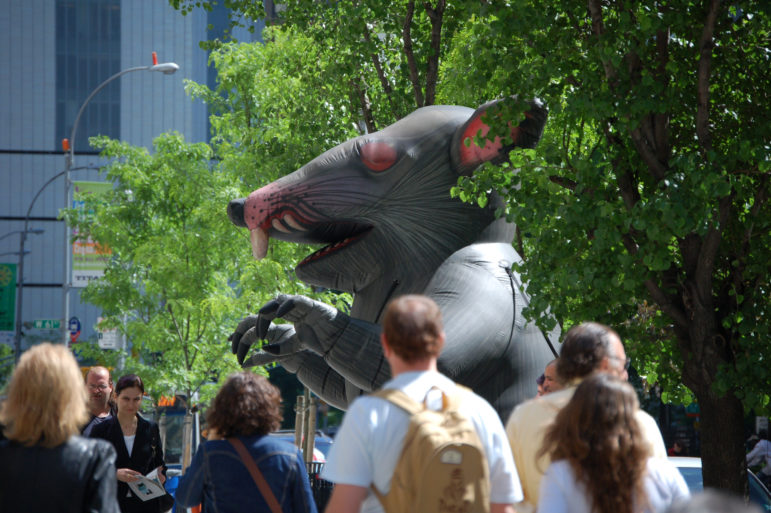
Janeen
The giant inflatable rats favored by unions are a visible sign of their presence. Less apparent has been an increase in the share of the city workforce that belongs to a union.
A recent report found not only that unionization increased in the city over the 2012-2015 period, but that the share of private-sector workers who belonged to a union rose.
The severe challenges facing the U.S. labor movement are well documented. “Unions Are Dying. What Will Replace Them?” asked Mother Jones in 2014, echoing Fast Company, which wondered a year earlier, “Unions Are Dying. What Comes Next?” Bloomberg View’s Megan McArdle declared in 2015, “Unions Are Powerless. Workers Aren’t.” Just this summer, the crisis facing labor was the subject of a excellent issue of Jacobin.
Yet there have been a few signs in recent months that the movement’s demise is not yet nigh. The sudden death of Supreme Court Justice Antonin Scalia led to a 4-4 deadlock on a case concerning dues collections that might have mortally wounded public-sector unions. The Verizon strike that ended last May was at least a partial victory for the Communications Workers of America and the International Brotherhood of Electrical Workers. And a new report from the Murphy Institute finds that, in New York City at least, the trends in unionization are reversing.
In 2015, 25.5 percent of the city’s workforce was unionized, according to the report, up from 22.3 percent in 2012 after years of “steady erosion.” Nationwide, 10.9 percent of workers are unionized.
What’s more:
In a striking deviation from the national pattern, private-sector density has increased in New York City and State over the past three years, reflecting, in part, the steady recovery of employment in unionized industries hard hit by the recession, like construction and hotels. Density also increased in health care, and even more in transportation and utilities. Meanwhile, public-sector density has declined slightly in the city (although not the state) relative to previous years.
(However, unionization is still much denser for government workers. According to a City Council summary of the report, 19 percent of the city’s private-sector workers belong to unions, compared with 69 percent of public-sector workers.)
There’s substantial variation even among the boroughs when it comes to the depth of union presence. Nearly a third of private-sector workers in the Bronx is in a union, but only one in nine Manhattan private-sector workers is.
Read the report here or watch a City Council hearing about it here.







